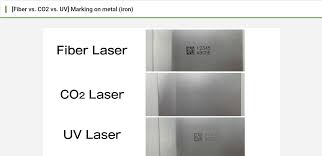The Power of CO2 Fiber Lasers
CO2 fiber lasers have revolutionized the world of laser technology with their incredible power and precision. These cutting-edge lasers combine the efficiency of CO2 lasers with the versatility and compactness of fiber lasers, making them ideal for a wide range of industrial applications.
One of the key advantages of CO2 fiber lasers is their ability to deliver high-quality cuts and engravings on various materials, including metals, plastics, and ceramics. Their precise beam control allows for intricate designs and sharp edges, making them a popular choice in industries such as automotive, aerospace, and electronics manufacturing.
Furthermore, CO2 fiber lasers are known for their energy efficiency and low maintenance requirements. They consume less power compared to traditional CO2 lasers, resulting in cost savings for businesses while reducing their environmental impact.
Another notable feature of CO2 fiber lasers is their compact size and ease of integration into existing production lines. This makes them highly versatile and adaptable to different manufacturing environments, providing companies with greater flexibility and productivity.
In conclusion, CO2 fiber lasers represent a significant advancement in laser technology, offering unmatched performance, efficiency, and versatility. As industries continue to demand higher precision and faster production speeds, these innovative lasers will undoubtedly play a crucial role in shaping the future of manufacturing processes worldwide.
Comparing CO2 and Fiber Lasers: Key FAQs Answered
- Is fiber laser better than CO2 for metal?
- What is CO2 fiber laser?
- What is the disadvantage of CO2 laser?
- Which is better RF laser or CO2 laser?
Is fiber laser better than CO2 for metal?
When it comes to metal processing, the question of whether fiber lasers are better than CO2 lasers is a common one. Both types of lasers have their strengths and applications in the industry. Fiber lasers are known for their high efficiency, faster cutting speeds, and lower maintenance requirements compared to CO2 lasers. They excel in thin to medium metal thicknesses and are often preferred for applications requiring high precision and speed. On the other hand, CO2 lasers are better suited for thicker metal materials and offer versatility in cutting a wider range of materials beyond metal. Ultimately, the choice between fiber and CO2 lasers depends on specific project requirements such as material thickness, desired cutting speed, and budget considerations.
What is CO2 fiber laser?
A CO2 fiber laser is a cutting-edge laser technology that combines the efficiency of CO2 lasers with the versatility and compactness of fiber lasers. This innovative laser system utilizes a carbon dioxide gas mixture to produce a high-powered beam that is transmitted through optical fibers for precision cutting and engraving on various materials. The CO2 fiber laser’s ability to deliver exceptional quality cuts on metals, plastics, and ceramics, coupled with its energy efficiency and low maintenance requirements, makes it a popular choice in industries such as manufacturing, automotive, aerospace, and electronics. Its compact size and ease of integration into existing production lines further enhance its appeal, offering businesses greater flexibility and productivity in their operations.
What is the disadvantage of CO2 laser?
One common disadvantage of CO2 lasers is their limited absorption by certain materials, particularly metals with high reflectivity such as aluminum and copper. This can result in reduced cutting and engraving efficiency on these materials, requiring additional processing steps or the use of alternative laser types for optimal results. Additionally, CO2 lasers typically have higher initial costs compared to other laser technologies, which may pose a barrier for some businesses looking to invest in laser systems. Despite these drawbacks, advancements in CO2 laser technology continue to address these challenges, making them a valuable tool for a wide range of applications in various industries.
Which is better RF laser or CO2 laser?
When comparing RF lasers to CO2 lasers, the choice ultimately depends on the specific application and requirements of the user. RF lasers, known for their high peak power and fast processing speeds, are often favored for tasks that demand rapid and precise cutting or engraving. On the other hand, CO2 lasers are renowned for their versatility across a wide range of materials and thicknesses, making them a popular choice for applications that prioritize flexibility and quality. Ultimately, the decision between RF and CO2 lasers should be based on factors such as material type, desired output quality, production volume, and budget constraints to determine which technology aligns best with the user’s needs.

No Responses